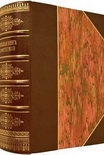The Triumph of Nancy Reagan Karen Tumulty (motivational novels .TXT) 📖

- Author: Karen Tumulty
Book online «The Triumph of Nancy Reagan Karen Tumulty (motivational novels .TXT) 📖». Author Karen Tumulty
“I don’t think I need apologize for them,” Thatcher continued, “because I’m relieved to hear that Mrs. Reagan saw in this not a source of historical reproach, but an opportunity for redecoration.”
On the dinner tables that night was a mix of china patterns that had been purchased during past presidencies. News accounts left the impression that this was a tribute to Ronnie’s predecessors Theodore Roosevelt, Woodrow Wilson, Franklin D. Roosevelt, and Harry S. Truman. In truth, Nancy claimed later, she had no choice but to commingle the settings because there wasn’t enough of one pattern to go around. Though Lady Bird Johnson had acquired some place settings suitable for luncheons when she and husband LBJ were in the White House, no complete set of formal china had been bought since the Truman administration. Over the years, many fragile pieces had broken—or been slipped into the handbags and pockets of guests. Today used White House dinnerware shows up regularly on eBay, and even Oscar-winning actress Meryl Streep has confessed to lifting hand towels from the presidential powder room.
So, Nancy set about acquiring a new 4,732-piece set from Lenox, edged in her favorite color, red, with a raised gold presidential seal. Once again, her timing was dreadful. In September the White House announced the $209,000 purchase of 220 place settings, which meant they cost nearly $1,000 apiece. On that very same day, the Reagan administration made the declaration that the US Agriculture Department—which had slashed children’s lunch subsidies by a third—would classify ketchup and pickle relish as vegetables for purposes of nutritional guidance on school cafeteria menus. The administration quickly pulled back the new regulation, but the damage was done. Columnists and cartoonists had a field day contrasting Nancy’s expensive tastes with her husband’s draconian policies.
One thing the controversy surrounding her china overshadowed was the shrewd, strategic approach that Nancy took toward entertaining in the White House—particularly when it came to state dinners. Over the course of the Reagan presidency, Ronnie and Nancy would host visiting foreign leaders at the rate of roughly one a month.
As Nancy saw it, “those weren’t parties, social life. They were instruments of foreign policy, and they were very effective,” said Selwa “Lucky” Roosevelt, who was chief of protocol at the State Department. “The dinners were beautiful. They were delicious, and the flowers she cared a great deal about.”
The first lady agonized over every detail. Even the smallest of decisions had to be run by her, at times to the frustration of the diplomats at Foggy Bottom. She demanded to be shown how the table settings would look and stressed out the kitchen staff with her insistence on tasting everything on the menu in advance, something that her recent predecessors had not done. Many of her selections were creative and bold. Nancy introduced what were then considered novel and exciting foods, such as pita bread (served at Australian prime minster Malcolm Fraser’s dinner in June 1981) and nasturtium salad (at Brazilian president José Sarney’s in September 1986.)
Nancy generally kept the guest lists to under a hundred, which made the events more intimate and more exclusive than those of other presidents, who would regularly invite upward of twice as many people. She also revived some of the regal traditions that had been dispensed with during the Carter years, including a uniformed color guard to herald the arrival of the Reagans and their guests of honor on the Grand Staircase in the main foyer. “Hail to the Chief”—a musical flourish that Carter had hated and banned—also made a return.
Much planning went into the seating charts. The placement of guests became, among other things, an opportunity to reward those who were in Nancy’s good graces. Later in her husband’s presidency, she and Secretary of State George P. Shultz developed a running private joke over the fact that she consistently put him next to the most beautiful and famous actress in attendance. “She always fixed me up with a hot Hollywood star at the White House dinners,” he told me with a laugh. “I got to dance with Ginger Rogers!” On that occasion, Nancy asked a White House photographer to take as many pictures as possible of Rogers, a Hollywood ballroom-dance legend, in the arms of the nation’s chief diplomat. She sent Shultz the entire pile of them—“enough to paper his entire office,” she recalled later.
Within the walls of the White House, Nancy was developing into a powerful force and an important ally to have. But to the outside world, she seemed icy, vain, and brimming with entitlement. By the end of her husband’s first year in office, postcards portraying “Queen Nancy” in ermine, jewels, and a crown were hot sellers in Georgetown gift shops and a frequent sight on the bulletin boards of Democratic offices on Capitol Hill. Headline writers feasted on her “New China Policy.” In October Rosalynn Carter delivered a measure of payback for Nancy’s constant insinuations that the Carters had left the White House a dump, telling a group of reporters that Nancy’s renovation had been completely unnecessary. “I think it was an excuse to do something,” the former first lady said tartly. “The White House was beautiful. I loved it. It was cared for.” The Carters had found the existing china adequate, she said, adding that tastefully mixing patterns enhanced the beauty of an occasion.
The headlines about Nancy’s profligacy kept coming. In early November, news broke of another improvement that she had made to the White House. The beauty salon in the residence, installed by Pat Nixon, had been refurbished with a bounty of donations by the National Hairdressers and Cosmetologists Association. Among them: a $3,000 Peruvian rug, a $400 Louis XV lounge chair, a $346.65 shampoo bowl,





Comments (0)